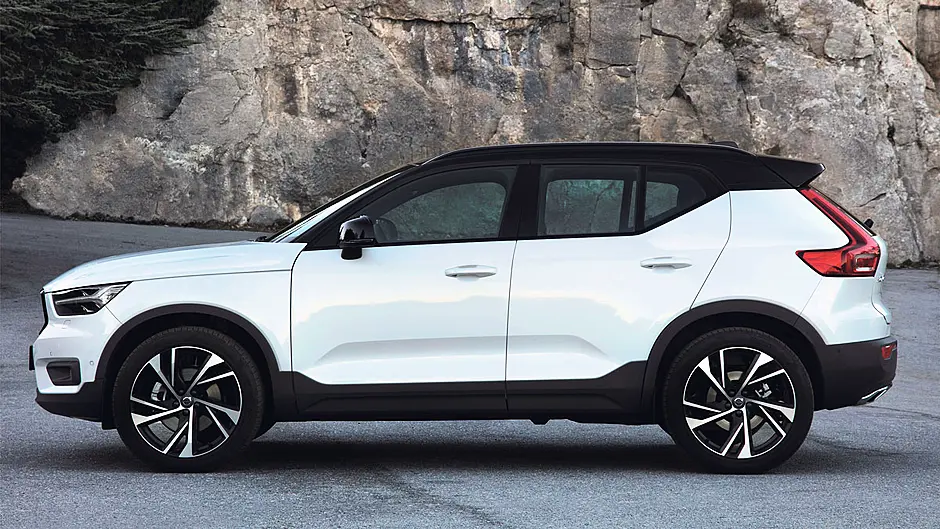BY BRIAN BYRNE
I LIKE the idea of plug-in hybrid. In practice, I have been able to make them work in various brands and models I’ve driven. But they take thinking about your driving a bit more than in a standard car, if you want to get the advantages.
You should want to get the advantages, because the extra cost of the plug-in privilege is high.
I got to thinking about this again in my recent week with a Volvo XC40 plug-in. Why was I driving a car that costs upwards of €20,000 more than its no-frills base model? The short answer is that I was asked to. The one still to be answered is whether all this is worth it?
Let’s take the XC40 on its own first. Much-awarded, including Continental Irish Car of the Year 2019, Women’s World Car of the Year 2018, European Car of the Year 2018. When your product gets that span of appreciation, it must deserve it. The XC40 does.
Chunkier in style than other Volvo SUVs, the more rugged look adds character to what is going to be a very well-finished car anyway, because that’s the thing about Volvos of the last decade or more. Once an aspirant premium brand, it got there, it is there.
Premium looks
You have the premium looks. You have the finish, inside and out, that allows the brand to park in the same VIP lot as Mercedes-Benz, BMW, Audi, Lexus and a couple of others.
You get the tech, the comfort and cosseting. The powertrains, Volvo-designed and built in tandem with its Chinese owner Geely, are world class.
The XC40 is in a ‘compact’ segment. A little bigger than a Mercedes GLA, a bit shorter than a Kia Sportage. But it looks and feels a very substantial car. It is especially roomy in its rear accommodation.
The review car was the Inscription Pro grade, top of the line.
Top-level comfort and safety specifications, no longer unique to Volvo so I’ll not wade through them here.
A quick refresher on plug-in hybrid. A petrol engine with a bigger battery than a normal hybrid, which can be plugged in externally to provide up to 46km of electric-only driving. Ideal for using in urban traffic, where EVs are at their most efficient.
On long motorway travel, you can set it to charge the battery and hold the charge, so that you have that full EV facility when you reach town again.
In Volvo’s case, they call it a Twin Engine. The main power in the XC40 is a 1.5 petrol with 180hp available, the electric motor bringing the combined power to 262hp. Obviously automatic, a good seven-speed and a smooth and easy drive.
Perky too, a 7.3s sprint to 100 km/h is do-able. The whole powertrain is very quiet indeed, and you’d never know it was a three-cylinder even when you push it.
Consumption
Depending on how you use it, the Volvo claim is that combined fuel consumption is in the order of 140mpg in old terms. That’s a good figure. But attainable only if you rigorously work the system to its nth degree, heading off with a full charge daily and your commute is regular and within the range of the charged battery.
Real world will be much closer to a diesel economy for most owners. But Volvo will be getting out of diesels in the next while anyhow.
It was a lovely car to have for my week. The size is right for me too, so I made the most of it whenever I could get out of the office.
The rub is the price. The basic petrol manual XC40 starts at €38,295, and I figure that’s a reasonable price for a premium car of its size. But the Twin Engine in Inscription Pro runs €57,600. There are €7,500 worth of SEAI grants that can bring the figure down for many owners.
Matching up the Inscription grade pricing, the extra cost of your plug-in capability is roughly €6,500. How much driving will you have to do to save that? Looks a simple sum, but put in all the variables and it is more like an Einsteinian problem.
Liked it, though. A lot.








